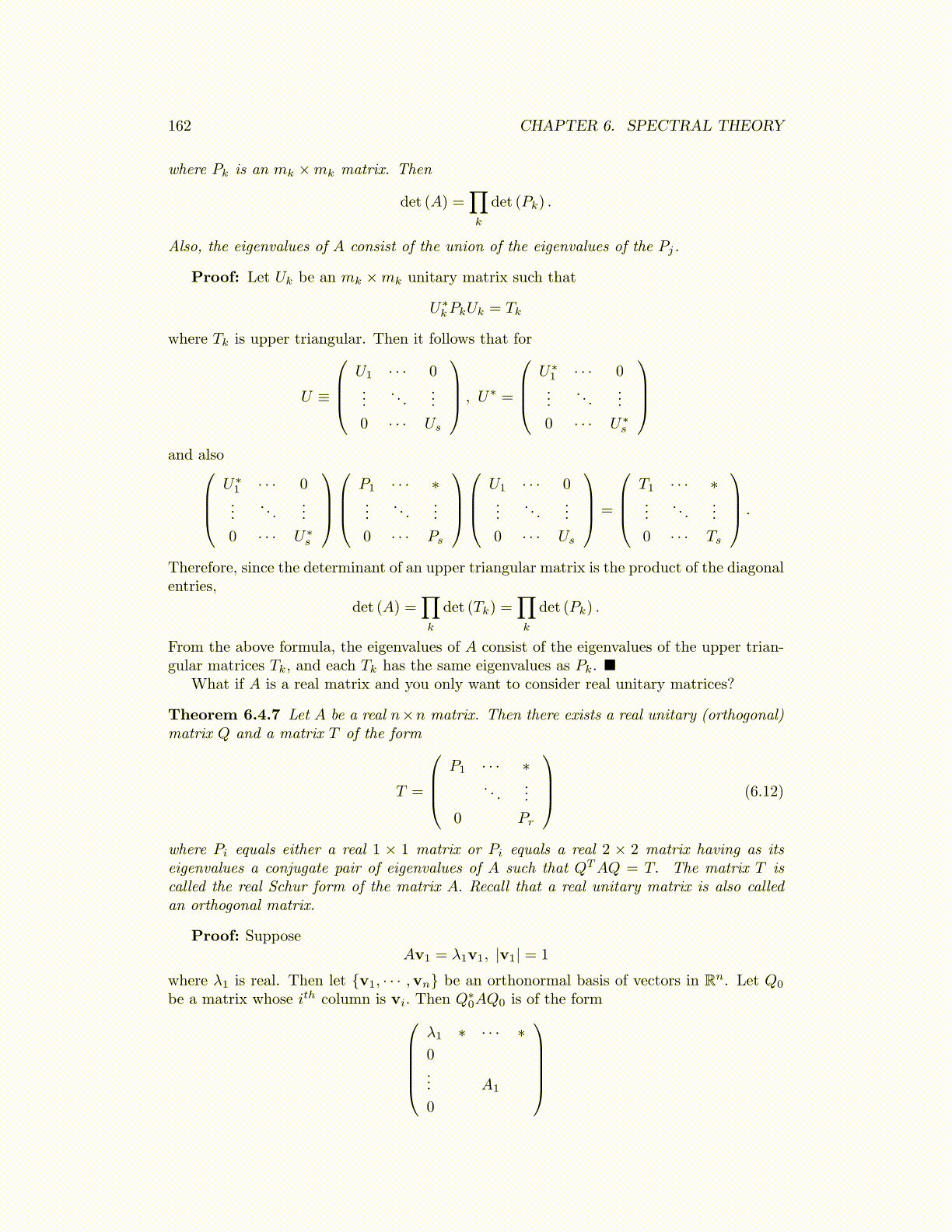
162 CHAPTER 6. SPECTRAL THEORY
where Pk is an mk ×mk matrix. Then
det (A) =∏k
det (Pk) .
Also, the eigenvalues of A consist of the union of the eigenvalues of the Pj.
Proof: Let Uk be an mk ×mk unitary matrix such that
U∗kPkUk = Tk
where Tk is upper triangular. Then it follows that for
U ≡
U1 · · · 0...
. . ....
0 · · · Us
, U∗ =
U∗1 · · · 0...
. . ....
0 · · · U∗s
and also
U∗1 · · · 0...
. . ....
0 · · · U∗s
P1 · · · ∗...
. . ....
0 · · · Ps
U1 · · · 0...
. . ....
0 · · · Us
=
T1 · · · ∗...
. . ....
0 · · · Ts
.
Therefore, since the determinant of an upper triangular matrix is the product of the diagonalentries,
det (A) =∏k
det (Tk) =∏k
det (Pk) .
From the above formula, the eigenvalues of A consist of the eigenvalues of the upper trian-gular matrices Tk, and each Tk has the same eigenvalues as Pk. ■
What if A is a real matrix and you only want to consider real unitary matrices?
Theorem 6.4.7 Let A be a real n×n matrix. Then there exists a real unitary (orthogonal)matrix Q and a matrix T of the form
T =
P1 · · · ∗
. . ....
0 Pr
(6.12)
where Pi equals either a real 1 × 1 matrix or Pi equals a real 2 × 2 matrix having as itseigenvalues a conjugate pair of eigenvalues of A such that QTAQ = T. The matrix T iscalled the real Schur form of the matrix A. Recall that a real unitary matrix is also calledan orthogonal matrix.
Proof: SupposeAv1 = λ1v1, |v1| = 1
where λ1 is real. Then let {v1, · · · ,vn} be an orthonormal basis of vectors in Rn. Let Q0
be a matrix whose ith column is vi. Then Q∗0AQ0 is of the form
λ1 ∗ · · · ∗0... A1
0